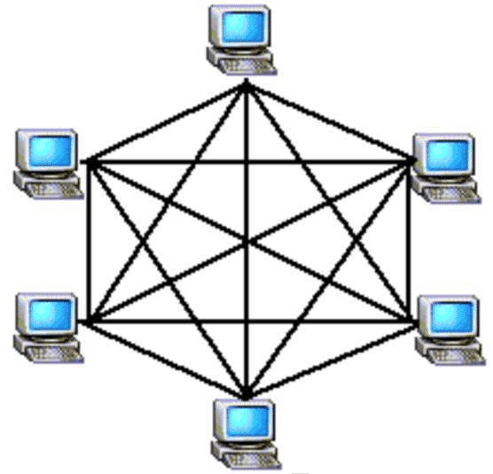
In general terms, a mesh topology is basically a type of network topology where you will see all the network nodes being individually connected to most of the other nodes in the network. In Mesh Topology, you will not find the concept of a central switch, computer, or hub functioning as a central point of communication to relay the messages ahead.
Different from other network topologies, Mesh Topologies can be divided into two kinds of Mesh Topology. These include:
- Partially connected mesh topology and,
- Fully connected mesh topology
About Partially Connected Mesh Topology
A partially connected mesh topology is a type of topology that does not have all the nodes connected to each other. There are only a few or partial nodes that are usually connected to each other. Generally, there are at least two of the computers in the network sharing the connections to multiple computers in the network. This is usually an inexpensive method to implement redundancy in a network.
About Fully Connected Mesh Topology
On the other hand, a fully connected mesh topology is a type of topology where all the nodes are connected to every other node in the network. If you are aware of the graph theory, then it is like a completely connected graph where all the nodes are connected to every other node in the network. The number of connections in this type of network can be calculated using the formula – n(n-1)/2 where n is the number of computers in the network.
Advantages of Mesh Topology
- In Mesh Topology, each connection is capable of carrying its own data load.
- Mesh Topology is agile and robust
- It is quite easy to a diagnosed fault in the Mesh Topology.
- It comes with advanced security and privacy.
- There is no traffic problem as there are dedicated point-to-point links available for each computer.
- If any maintenance work in the network is in process, it does not lead to interference for the devices in a full-mesh topology.
- As there are multiple links in Mesh Topology, even if any route gets blocked, there are other routes available for data communication.
- It is easier to transmit data from different devices simultaneously.
- Expansion and modification in topology can be processed without disrupting other nodes.
Disadvantages of Mesh Topology
- Sometimes, there can be a high possibility of redundancy in most of the network connections.
- When the connectivity gets more, installation and configuration are difficult to process. It means that when the number of devices in the network increases, the complexity of the network increases more.
- Mesh Topology requires a high number of I/O ports and Cables for communication.
- In the case of full connected Mesh Topology, cabling cost becomes quite expensive.
- Mesh Topology becomes costlier compared to the other network topologies such as Star Bus, and Point to Point Topology.
- Bulk wiring is required in Mesh Topology.
- Maintenance of this topology is quite complex, including the administration of the network.
Conclusion
Although Mesh Topology has become quite popular in the market, it is still not a commonly used network topology by users currently. However, Mesh topology is quite advantageous as it is still followed in certain circumstances such as a point-to-point connection or for all points to all connections conditions.
So, now as you know the major advantages and disadvantages of Mesh Topology, you can easily decide whether you should go for Mesh Topology or not.

